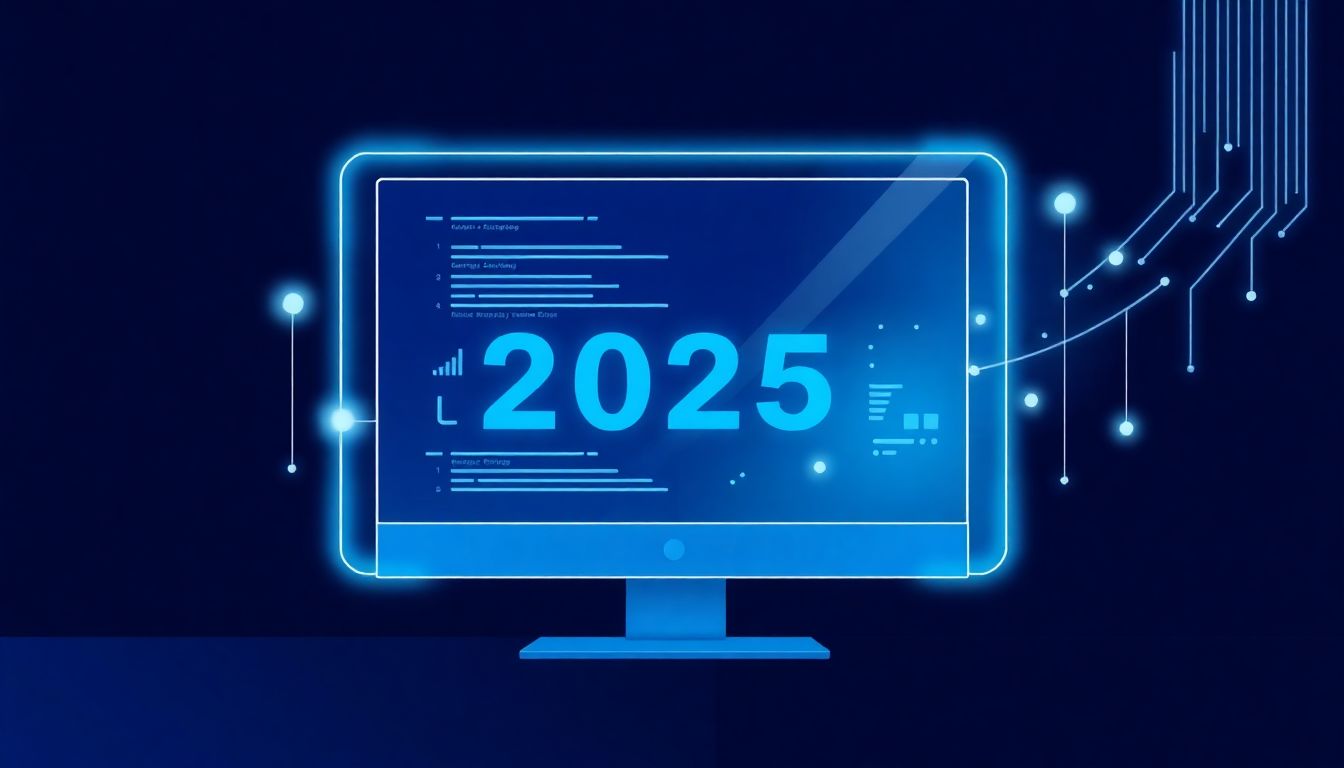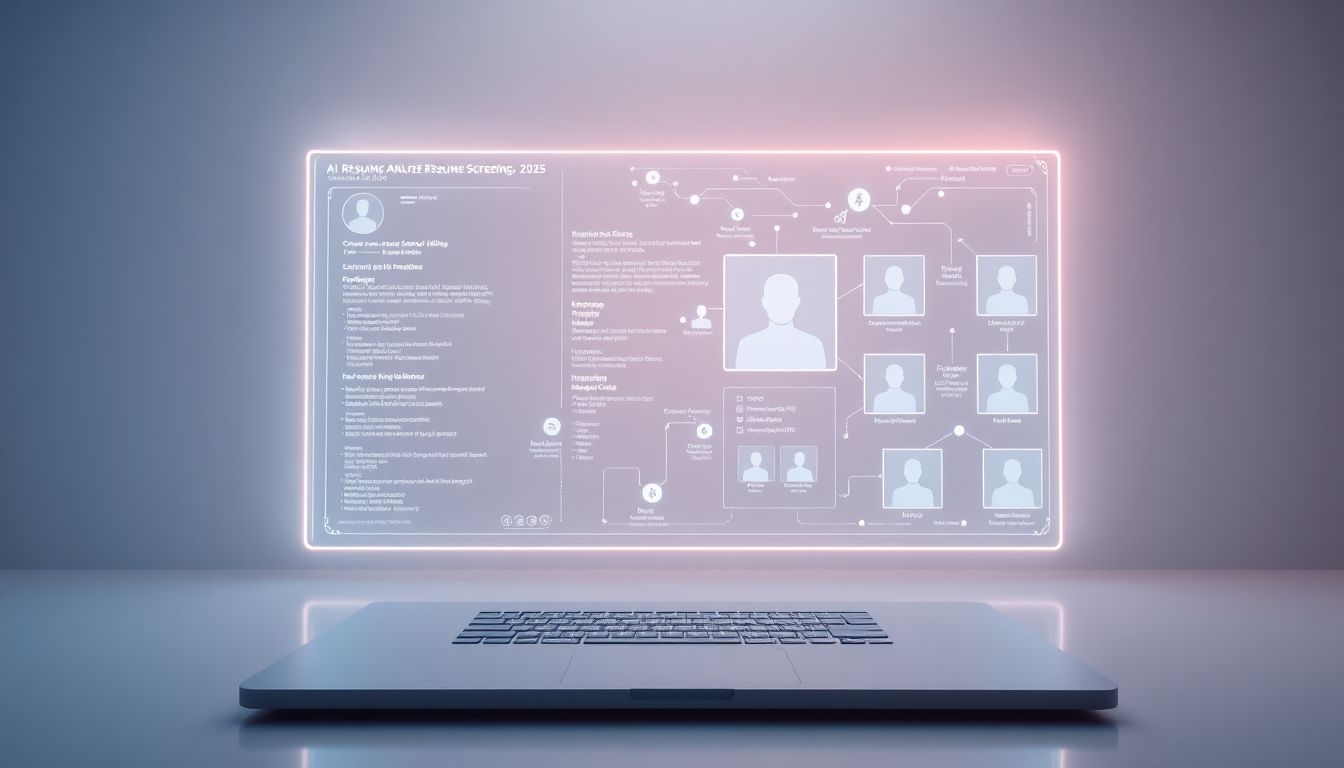Hey, I get it—screening resumes can be a real headache, especially with piles of applications. Thankfully, AI resume screening is here to make life easier in 2025. Keep reading, and you’ll discover how this tech is changing hiring and how you can use it to find the perfect candidates effortlessly. Soon, you’ll see why more companies are turning to AI tools to save time and get better results.
Key Takeaways
Key Takeaways
- By 2025, AI resume screening automates the review process, quickly analyzing resumes for key skills and keywords. It scores and ranks candidates, reducing screening time from hours to minutes, and learns to improve over time.
- Using AI is essential in 2025 due to the large number of applications. It helps find the best-fit candidates faster, reduces bias, and keeps companies competitive in hiring quality talent.
- AI screening speeds up hiring, makes evaluations consistent, and frees recruiters to focus on interviews. It also uncovers hidden talent and improves overall hiring quality with data-driven insights.
- Most companies use AI to review resumes before human review, handling thousands of applications rapidly and fairly, and preventing bias from influencing decisions.
- Select the right AI tool by checking for skills matching, volume capacity, user-friendly design, transparency, and data security. Continuous updates help it adapt and improve over time.
- To implement AI screening effectively, sharpen job descriptions, train staff on interpreting AI scores, integrate tools with existing systems, and review results regularly for better accuracy and candidate experience.
- Many firms report huge time savings and better diversity, with faster onboarding of niche talent and handling application surges smoothly, showing AI makes hiring smarter and quicker in 2025.

1. How AI Resume Screening Works in 2025
By 2025, AI resume screening has become a streamlined process that automates much of what recruiters used to do manually. Essentially, these systems analyze resumes using algorithms and natural language processing (NLP) to identify key skills, experience, and keywords that match a job description.
When a candidate submits an application, the AI tool scans their resume and scores it based on criteria like relevance, skill alignment, and keyword density. Resumes with over 80% keyword match are three times more likely to be reviewed by humans, making the process faster and more targeted.
Most companies now use AI to handle high volumes of applications in seconds, drastically reducing the time recruiters spend on preliminary screening—sometimes from 23 hours per hire down to just a few minutes.
Machine learning models continuously improve their accuracy by learning from hiring decisions, meaning the more they are used, the better they get at picking suitable candidates.
Popular tools leverage these techs to rank applicants objectively based on professional backgrounds, key skills, and how well their resumes align with job requirements, minimizing human biases.
2. Reasons Why AI Resume Screening Is Essential for Hiring in 2025
In 2025, AI resume screening is no longer optional, but a must-have for organizations aiming to stay competitive. With the exploding number of job applications—many companies see thousands for a single role—manual review simply can’t keep up.
Using AI helps companies quickly filter out unqualified applicants and focus on the best-fit candidates, saving valuable time and resources.
It brings objectivity to hiring, reducing unconscious biases that humans might unknowingly introduce during screening—creating a fairer process.
Furthermore, AI tools can identify candidates with the exact skills required for a role—with resumes with high keyword scores being three times more likely to catch a recruiter’s eye—making sure top talent isn’t missed.
With 70% of employers using AI in their hiring process, companies that skip this step risk falling behind competitors who benefit from faster, smarter screening methods.
3. Benefits of Using AI Resume Screening in 2025
Adopting AI for resume screening in 2025 offers a bunch of benefits that can transform your hiring process. First, it speeds things up—scanning hundreds or thousands of applications in seconds beats hours of manual work.
Second, AI improves consistency. Unlike humans, algorithms don’t get tired or distracted, so candidate evaluation remains fair and uniform every single time.
Third, it boosts efficiency. Recruiters can focus on interviews and strategic decisions rather than drowning in paperwork, freeing up valuable time.
Fourth, AI can help find hidden gem candidates who match key criteria but might not perfectly fit traditional filters—thanks to machine learning models that continually get smarter.
Finally, integrating AI screening tools often leads to better quality hires, because the system prioritizes candidates based on data-driven insights rather than gut feelings, leading to stronger teams and better business outcomes.

9. How AI Resume Screening Has Changed Hiring in 2025
By 2025, AI resume screening has shifted hiring from a manual chore to a quick, data-driven process.
Almost 70% of employers now rely on AI tools to review resumes before a human ever sees them, making the process much faster.
With AI handling high volumes of applications—sometimes in just seconds—it’s now possible to screen thousands of candidates in a fraction of the time it used to take.
This means that recruiters spend less time sorting through resumes and more time on interviews and candidate engagement.
Also, AI enhances objectivity, removing some of the biases that can creep into traditional screening methods, leading to fairer hiring practices.
Thanks to machine learning models that improve with every use, AI can now better identify candidates with the right skills, experience, and cultural fit, based on real data rather than gut feeling.
Consider how much this has changed over just a few years—what used to be a lengthy, subjective process is now concise and more transparent.
It’s no wonder that many HR teams say AI has become an indispensable part of their hiring toolkit today.
10. How to Choose the Best AI Resume Screening Tool in 2025
Picking the right AI resume screening tool isn’t as simple as grabbing the most popular one.
Start by looking for tools that prioritize the “must-have” skills listed at the top of your job descriptions—missing those can lead to auto-rejection, and you might miss top candidates.
Check if the tool can handle your application volume—some platforms can process thousands of resumes in seconds, saving you hours or even days.
Look for features like keyword relevance scoring, candidate ranking, and seamless integration with your existing applicant tracking system ([ATS](resumescreening.ai)).
It’s also smart to pick a tool that offers transparency—understanding how it ranks candidates helps you trust the process.
Don’t forget to consider user experience—an intuitive interface makes training easier and adoption smoother for your HR team.
Read reviews or ask for demos to see how the platform works in real scenarios.
And, of course, prioritize tools that keep data secure and comply with privacy laws—you’d hate to see your candidate info leaked.
Finally, choose a system that continually updates its algorithms based on your feedback, so it keeps getting smarter over time.
11. Implementation Tips for Effective AI Resume Screening in 2025
Getting AI resume screening right requires some planning.
First, clean up your job descriptions—use clear, specific language and include all “must-have” skills upfront to help AI prioritize correctly.
Next, train your team on how to interpret AI rankings without relying solely on scores—they’re helpful, but they shouldn’t be the only deciding factor.
Integrate your AI tool with your ATS or HR platform to streamline workflows and minimize manual data entry.
Set criteria for auto-rejections carefully—avoid overly strict filters that might exclude good candidates with slightly different wording or non-traditional backgrounds.
Regularly review the screening results and adjust your keywords or filters based on feedback to improve accuracy.
Keep candidates informed about their application status—transparency improves experience, even if they’re not selected.
Invest in training your recruiters to understand AI insights—this ensures they can make well-informed decisions and spot potential issues.
And finally, monitor your hiring metrics—if time-to-fill or quality of hire improves, chances are your AI setup is on point.
12. Real Examples of AI Resume Screening Success in 2025
Many companies have already seen real benefits from AI screening.
For example, a mid-sized tech firm reported reducing their resume review time from 23 hours to just 15 minutes per hire, thanks to AI.
They also noticed a more diverse candidate pool, as AI reduced unconscious biases in initial screening.
Another finance company used AI to identify candidates with niche skills—finding talent that traditional filters often missed.
This led to faster onboarding of specialized roles, giving them a competitive edge in talent acquisition.
Similarly, a retail chain implemented AI to manage seasonal spikes, effortlessly handling thousands of applications in a short window.
Their HR team now spends less time filtering resumes and more time engaging with top candidates.
These are just a few examples showing how AI resume screening is making hiring smarter, faster, and fairer in 2025.
FAQs
AI resume screening uses algorithms to analyze resumes for keywords, skills, and experience. In 2025, advanced AI models evaluate candidates faster, reducing bias and helping recruiters identify top matches efficiently.
AI resume screening streamlines the hiring process by quickly filtering large candidate pools, reducing human bias, and ensuring better alignment with job requirements in a competitive hiring market.
Using AI for resume screening saves time, improves candidate quality by better matching skills, reduces bias, and helps companies hire more efficiently in a fast-paced job market.
Select software with accurate parsing abilities, customizable filters, bias mitigation features, user-friendly interface, and integration options with your existing applicant tracking systems.